
80 Greatest Horror Movies
Special Mention. Onibaba
This landmark in fantasy cinema is bleak, sexually charged, and dripping with depravity. Symbolism runs rampant and the dialogue is minimal in this harrowing study about the rotten nature of humanity and the useless wars they wage. Kiyomi Kuroda’s startling black-and-white cinematography, the excellent, percussive jazz soundtrack, and the final twist (one which might seem obvious today but not back then) is reason enough to watch this gem.
80. Gremlins
The best way to describe Joe Dante’s Christmas Horror-comedy Gremlins is to quote the tagline: Cute. Clever. Mischievous. Intelligent. Dangerous. Gremlins offers enough thrills to please even the most well-seasoned horror fan, and enough laughs to satisfy the entire family. Not enough credit is given to Chris Columbus for his sharp script, which not only gives this monster movie a heart but introduced some truly iconic creatures and a cast of characters we’ve grown to love. Gremlins is not only a witty B-movie, but a minor classic and one of the best films released in the 80’s no matter what the genre. The special effects and puppetry designed by Chris Walas are rather incredible, even by today’s standards, and I would argue that the practical effects look much more realistic than something intangible, such as CGI. Though it sports a PG rating, Gremlins contains some surprisingly dark moments and was one of two films in 1984 to influence the MPAA to create the PG-13 rating (with Red Dawn being the first film given the new rating in August 1984). Gremlins also caused a resurgence of monster-orientated films and helped pave the way for C.H.U.D. and Critters, to name a few. This tribute to the 1950s matinee genre stands the test of time from a time when parents would take their children to family films that pushed the boundaries of the MPAA. Joe Dante is an under-rated director and was clearly making some of the most interesting Hollywood films in the ’80s. See it with your children. Gremlins makes the perfect gateway film into the world of Horror. And remember…
Never get them wet.
Keep them away from bright lights.
And no matter how much they cry. No matter how much they beg. Never, ever feed them after midnight.
79. The Tenant
Le Locataire (The Tenant) is the final film in Polanski’s unofficial ‘Apartment Trilogy’ following Rosemary’s Baby and Repulsion. Polanski stars as Trelkovsky, a Polish-born French citizen who moves into a spooky apartment whose previous tenant (a beautiful young woman) committed suicide. His neighbours eye him with suspicious dislike and over the course of the film, Trelkovsky becomes increasingly paranoid believing that the other tenants are engaged in a conspiracy to drive him to suicide. The Tenant was poorly received on its release and even today it is still overshadowed by Polanski’s more famous efforts, but the film is a perfectly crafted paranoid nightmare about a man’s loss of identity and descent into madness. Polanski expertly places viewers in the head of Trelkovsky in the same way that he placed us inside Catherine Deneuve’s mind in Repulsion and the result is often maddening. The Tenant is often described as a cross between Franz Kafka and William Castle, and if that isn’t enough to sell you, the shocking twist ending will leave you with plenty to discuss after the credits roll.
78. Ringu
Long before Kiyoshi Kurosawa’s Pulse, Hideo Nakata gave us Ringu, a truly unnerving supernatural thriller about the anxieties of modern technology. The film’s irresistible urban legend takes root in the opening sequence with a campfire story told by two schoolgirls which immediately sets the tone. From there on out, it’s 90 minutes of sheer, shivering terror. The story of a cursed videotape that kills the viewer within seven days was a notable success in Japan, where it broke box-office records and eventually caused a sensation with mainstream Western audiences, almost single-handedly capturing our current obsession with Japanese horror. Ringu has an uncanny ability to draw the viewer into its world with its sparse, tense, surreal atmosphere, simple flash-cuts, and a well-timed musical score that set up quite a few jolts throughout. Nakata proved he’s a master of suspense by creating a sense of dread in even the quietest of moments. The amount of tension created immediately after the telephone rings, for example, is nothing short of breathtaking. And while it is almost entirely free of visual horror, Ringu was one of the creepiest films released in the ’90s. This beautifully shot, near colorless pic — punctuated with stark blacks and whites, and driven by a nail-biting score — is a masterpiece of edgy surrealism!
77. Poltergeist
Poltergeist has become legendary for two major reasons other than being a great film: first, there were rumors that co-producer/co-writer Steven Spielberg took over as director midway through production. Secondly, its young co-star Dominique Dunne was murdered just before the film hit theaters. I will always remember Poltergeist, however, as the film that left me sleepless for a week as a child. As Tangina (Zelda Rubinstein) says near the climax of Poltergeist, “It knows what scares you.” The words by the psychic medium, reflect what makes Tobe Hooper’s supernatural thriller so good! Poltergeist is a film that knows how to scare you, and more importantly, knows what scares us. Hooper’s directing skill combined with Spielberg’s ability to make anything family-friendly, no matter how horrifying, makes this one of the few entries on this list that the entire family might theoretically enjoy. But Poltergeist achieves greatness beyond mere genre thrills because of the double social critiques it explores with such dedication and humor. Someone once famously said that Poltergeist does for TV sets what Psycho does for showers. I never had a problem taking a shower, but I don’t like leaving the TV set left open overnight.
76. The Fog
Following up on his groundbreaking hit Halloween, John Carpenter eschewed the slasher genre in favor of The Fog, an atmospheric tale about a small California coastal town that becomes literally haunted by its past. Although it was received well in its time, The Fog failed to garner the same cult enthusiasm as many of Carpenter’s later works, and yet it features one of his best screenplays. The script by Carpenter and producer Debra Hill is unique in that it features several stories within stories and Carpenter immediately sets the tone perfectly in the prologue, opening with a campfire ghost tale about Elizabeth Dane delivered by storyteller John Houseman. From here on out, every character in this film has their own story to tell, and every story, no matter how big or small, somehow ties into the bigger picture. There’s more than just undead pirates lurking beneath the surface; The Fog is really about history’s inescapable influence on the present and the way in which the church preserves itself through un-Christian-like ways. Chris Justice put it best when he described the brick wall that hides the journal that Father Malone discovers as a stark visual reminder of how many layers of lies, stories, and time people will construct to conceal such dangerous historical facts. Fog is often a staple in horror movies but never has fog itself become a metaphor for our capacity to obscure and/or conceal the truth. The Fog is also one of Carpenter’s best-looking films (maybe his best). The cinematography by Dean Cundey is gorgeous, putting to use the anamorphic 2.35:1 widescreen framing, and making the most of the coastal town setting. I especially love the isolated picturesque Lighthouse, acting as a radio station and capturing the glowing fog as it silently moves across the bay. The score is also one of Carpenter’s best, and the editing is so sharp, the film runs a brisk 89 minutes. The Fog is held together by Adrienne Barbeau (Carpenter’s then-wife) as the husky-voiced late-night DJ who’s able to who warn listeners about the invasion; Tom Atkins, a local truck driver and Halloween’s Jamie Lee Curtis who shares the screen with her real-life mom Janet Leigh (Psycho).
75. Seul Contre Tous (I Stand Alone) (One Against All)
I Stand Alone, a French nouveau Taxi Driver, is sure to arouse controversy with its scenes of explicit sex and bloody violence. The film is a visually violent and verbally vulgar assault on the senses, but the far more deeply disturbing element at play isn’t the onscreen violence, but how Noé takes us inside the mind of the protagonist. And so what elevates I Stand Alone from an average horror film is the way it refuses to cut away from the butcher’s head-space. We get his point of view from the first frame to the very last. The butcher never becomes a sympathetic character and Noé doesn’t try to justify or excuse his behavior. Philippe Nahon’s performance is strong and fearless, and Nahon does a fine job staying clear of stereotypes and movie killer clichés. The flashy scope cinematography; the twisted, bitter, and cynical voiceover; the aggressive shooting style; the deliberate widescreen close-ups; the endless shots of empty corridors, vacant industrial streets; the repeated uses a swish pan or a skip frame; and the marvelous score accompanied by sharp electronic sounds of gunshots all help make I Stand Alone one of the nastiest entries into the genre you will ever see. Three-quarters into the film, Noé takes a page from legendary schlockmeister William Castle’s 1961 Homicidal by giving the audience a 30-second warning to either leave the theater or avert their eyes, before continuing to the film’s bloody climax. Those with weak stomachs should heed the warning.
74. Q The Winged Serpent
Genre pioneer Larry Cohen takes a stab at the giant-monster genre with Q, The Winged Serpent, a first-rate grade-Z schlock masterwork, which successfully combines a film noir crime story with good old-fashioned creature effects. The title refers to the winged Aztec god Quetzalcoatl, represented here as a dragon-like, flying serpent hovering over New York City. Given his budgetary restrictions, Coen directs Q much like Spielberg directed Bruce in Jaws. We see a shadow here and there across the sides of skyscrapers and along the Brooklyn Bridge, and we catch a glimpse of it’s giant claws, but Cohen keeps the creature mostly offscreen for the first two acts. The cinematography by Robert Levi and Fred Murphy makes the most of the Big Apple atmosphere, and the aerial photography representing Q’s-point-of-view is especially impressive given the low budget. The monster itself looks silly, brought to life by a combination of stop-motion animation and prosthetics (courtesy of David Allen) – but the homemade, Ray Harryhausen-like quality only adds to the pic’s odd charm. What makes Q such an enjoyable film is not so much its gore nor its creature, but rather Cohen’s sense of humour and Michael Moriarty’s knockout performance. The film lights up every second Moriarty is onscreen as the small-time criminal, down on his luck, and on the run from the mob. His performance is so good that the story becomes more about Jimmy than the giant serpent terrorizing a city. Cohen used what little resources and money he had and made the most of it. Q is a movie crammed with witty dialogue, bizarre plot twists, and some great ideas. Sleazy, entertaining, and guerrilla filmmaking at its best.
73. Kwaidan
Based on stories from Lafcadio Hearn’s collections of Japanese folk tales, the 1964 Japanese portmanteau film Kwaidan directed by Masaki Kobayashi, is an impressively mounted anthology horror film consists of four separate and unrelated stories. It won the Special Jury Prize at the 1965 Cannes Film Festival and received an Academy Award nomination for Best Foreign Language Film. Kwaidan’s haunting poetry is conveyed with gorgeous images, making it one of the most beautiful horror films you will ever see. Avoiding outright scares and gore, Kobayashi favors slow buildups of tension and quiet suspense and his use of artificial sets and colorful backdrops which stand-in for many of the outdoor scenes, give the film an almost fairytale-like quality. The soundtrack is equally impressive, and although it might not outright scare, you can’t help but admire the craft and artistry.
72. Audition
This art-house cult horror film will be talked about for a long time to come. The last section of the film features some of the most harrowing, graphic closeups of torture ever put on celluloid, but even in its gore-filled moments, the film is a monumental achievement by a director willing to take chances and challenge his audience. Based on a novel by Ryu Murakami, Audition isn’t nearly as gory as Ichi the Killer, but it has to be Miike´s most disturbing and most powerful film. Listed at #11 on Bravo´s 100 Scariest Movie Moments, Audition is not for the faint of heart.
71. Black Christmas
We never did find out who Billy was. Maybe it’s for the best since they never made any sequels to Bob Clark’s seminal slasher film, which predates Carpenter’s Halloween by 4 years. Whereas Texas Chainsaw Massacre, released the same year, blends backwoods horror with the slasher formula, Black Christmas is widely considered the first proper slasher and is noted as one of the earliest films to present some of the subgenre’s defining characteristics: a mysterious stalker, a set of adolescent or young-adult victims, a secluded location with little or no adult supervision, point-of-view camera shots representing the “killer’s perspective,” and graphic depictions of violence and murder. Like Carpenter, Clark avoids graphic bloodshed, focusing instead on suggestion and careful mise-en-scene and editing. There’s something special about how he leads us through a labyrinth of red herrings and his skillful handling of such plot devices such as obscene phone calls from within the house leave much to our imagination. More importantly, unlike many of the slashers that followed, Black Christmas cannot easily be accused of misogyny; the violence against the female protagonists isn’t the picture’s raison d’etre. If there was ever a character from a slasher film to be chosen for a thesis on feminist work, it would have to be the film’s “final girl,” Jessica.
Special Mention: Seconds
John Frankenheimer’s ultimately terrifying Twilight Zone-like, futuristic thriller Seconds, received mixed reviews and was critically panned at the Cannes Film Festival. But what do they know? This provocative film underscores the Faustian theme – the yearning for youth and desire to live life over again – and the price to pay for everything gained. Seconds is a chilling character study and a distressing examination of happiness, loneliness, consumerism, and the American dream. Thankfully, repeated showings on late-night television helped the film find a much-deserved cult following. Seconds features dazzling, disorienting, rich, black-and-white cinematography from the legendary James Wong Howe, whose use of long takes, wide-angle lenses, and skewed framing gives Seconds the feel of a Kafkaesque nightmare. Saul Bass contributes a spectacularly haunting title sequence that immediately sets the mood along with the edgy jangle of Jerry Goldsmith’s excoriating score. John Frankenheimer (The Manchurian Candidate, Ronin) directs Seconds as a nightmare, heightening every shot to maximum discomfort. The unbroken hand-held camerawork on many angst-ridden sequences, including an outdoor orgy, gives Seconds a unique, rough feel of the ‘60s and ‘70s underground. And the echoing sound effect of a drill near the end will make you scream.
Frankenheimer’s claustrophobic hellish vision of an unhappy man examining his life to see what went wrong is essential viewing. Rock Hudson’s portrayal of a tortured soul (now an abstract painter) struggling to fill in the blank canvas of what he calls life, is a tour de force performance. Seconds is a masterpiece and one of the greatest psychological horror films ever made.

70. It’s Alive
Although not his first feature, It’s Alive helped establish Larry Cohen’s reputation as a director of ingenious low-budget genre films, which come with unexpected twists, conflicted anti-heroes, dark humor, and sympathy for monsters, both human and non-human. Cohen, writer and director of such projects as God Told Me To and Q, made his first foray into the horror genre with this low-budget cult favorite about a murderous mutant baby on a killing rampage. It’s Alive still remains provocative to this day, and leaves one with much to think about regarding unconditional love, parental responsibility, abortion, guilt, intolerance, and institutional care. The script also hints that the mutation was a result of either environmental pollution or inadequately tested fertility drugs, a concept later explored more fully in the sequels It Lives Again and Island of the Alive – neither, however, was deeply terrifying as this. There are a number of standout scenes here, mostly crafted with superbly controlled widescreen compositions in Fenton Hamilton’s blurry, fish-eyed Baby-cam-cinematography. The initial delivery room scene is downright disturbing, beginning with a dolly down a long corridor showing a victim staggering out, to inside the bloodied operating room where the delivery team is dead and drenched in blood – and topped by the chilling line, “The umbilical cord’s been severed, but not surgically – it’s been chewed off”. It’s Alive is all the more effective with Cohen’s perverse reversal of paternal/infant imagery. The baby, although murderous, is desperately trying to find either food or its family, and while its bloody rampage is mostly kept offscreen, the attack on the milkman remains the pic’s highlight, with the sight of glass shattering and the combination of blood and milk flowing out of the milk truck straight to the sewer. These scenes, juxtaposed against Ryan’s need to prove to himself that the baby by extension is not his, are utterly heartbreaking. Cohen tells us no matter how monstrous the newborn is, it is innocent in its search for maternal love. Most fascinating is the ending where Ryan follows the creature to the finale’s underground L.A. sewer system which, by design, is reminiscent of a womb. His fathering instinct takes over, suddenly turning him from the baby’s assassin to its saviour. What elevates It’s Alive above being a typical piece of B-grade schlock is Ryan’s superb performance as the angst-ridden father. His performance is very moving and revealing and important to express the film’s central theme. Cohen masterfully juggles terror, comedy, and social commentary, leaving us with a more engrossing horror pic than the usual for this genre. Also, worth noting is legendary composer Bernard Herrmann’s fine soundtrack and Rick Baker’s creepy-looking baby model effects.
69. Blade
British director Stephen Norrington helmed this David S. Goyer adaptation of the Marvel Comics character created in 1973 by writer Marv Wolfman and artist Gene Colan. Though some may find the plot a bit lacking, Blade is a dark, edgy, thoroughly watchable action movie featuring jaw-dropping fight sequences, a hip techno soundtrack and perfect casting for its titular character. The production design and cinematography are worth special attention and I especially love the blood-drenched nightclub sequence. Blade is not only one of the most enjoyable vampire films but one of the best comic book movie adaptations yet.
68: Misery
Elevated by standout performances from James Caan and Kathy Bates, Misery remains one of the best Stephen King adaptations to date. Director Rob Reiner is clearly more interested in the dark humour and humanity than the gory detail in King’s novel, but make no mistake about it, Misery is a tough watch, soaked in sharp dialogue, a brooding atmosphere, and disturbing bodily harm inflicted on James Caan by sweet old Kathy Bates. I can still feel his pain.
67. Sisters
Sisters was director Brian De Palma’s first venture into Hitchcock territory and it set the stage for him as a filmmaker. In this self-confessed homage to Hitchcock, De Palma references everything from Psycho to Rear Window to Vertigo, but the spirit of the film is all his. Brian De Palma conceived the idea for Sisters after reading an article about a set of Russian Siamese twins. He set out to write a script that detailed the twins’ psychological problems as they grew older, and he even independently financed the low-budget pic himself. Quebecois model Margot Kidder brilliantly plays the twins, Danielle and Dominique, and Bernard Herrmann provided his last, but greatest score here. Sisters is also De Palma’s first excursion into the subjects of voyeurism and sexual horror, and in a way, Sisters is the culmination of all the themes he has developed over his long career as a filmmaker. No doubt he has far more accomplished films, but Sisters is the truest to his soul. It’s one of the best films of the 1970s — it’s stylishly made (I especially love how it explores using split-screens) — and it’s perverse, darkly funny, at times. Sisters is bloody good and an entertaining slasher pic with plenty of scenes that put the viewer on edge.
66. Candyman
Bernard Rose had already impressed horror audiences with his little-seen 1988 film Paperhouse, but in 1992, the writer/director took everyone by surprise with Candyman, a dark horse hit that had critics and audiences talking for months. Based on Clive Barker’s short story The Forbidden, Candyman is one of the few horror films released in the early ’90s that was not only original but truly terrifying. The pic examines the power of myth and the role of imagination in fear while using the Chicago projects as a backdrop for racial injustice. The titular legend involves the son of a slave who was tortured and murdered for impregnating a white woman. Out for revenge, the townspeople cut off Candyman’s hand and covered his entire body with honey before leaving him to the bees. He has since haunted the bedtime stories and nightmares of his Chicago burial ground, shedding innocent blood when his name is spoken five times into a mirror. Candyman works on so many levels. Not only is it a sophisticated, engaging story but it also gave the horror world a tragic new boogeyman to fear in Tony Todd’s ominous portrayal of Candyman. Tony Todd’s work as Candyman is one of the best of modern horror. Rose produces a number of startling shocks and scares, but what makes Candyman send shivers down your spine is the brooding atmosphere that drips through every frame. Candyman also features a haunting and depressing soundtrack by Phillip Glass, which perfectly mirrors the film’s boogeyman, and the top-notch make-up and practical effects are considered remarkable for the day.
65. Scream
By now, most cinephiles are familiar with Wes Craven’s Scream. Written by screenwriter Kevin Williamson, Scream was a brilliant deconstruction of the horror genre — a canny, witty, and surprisingly effective thriller that had everyone talking. Admittedly, the opening stand-alone scene ultimately stands as the high point of the film, but Scream offers so much more. The end result is a fun, well-paced slasher that remains one of the best modern examples of its kind and perhaps the most influential horror movie of the past 40 years. In fact, Scream was such an unexpected smash hit in 1996, it revitalized the genre and inspired a new generation of self-knowing teen slasher films. It has since spanwed numerous sequels, a TV series spinoff, and made Ghostface one of the most iconic villains in cinema history.
64. Scream 2
Enter blurbYou could easily make a case that Scream 2 is a superior film to Scream. Indeed, Scream 2 lacks the original’s element of surprise, but in many ways it’s a smarter film and packs more nail biting suspense than it’s predecessor. Scream 2 also doubles down on all the meta-ness that made the original such a breath of fresh air— so much so, it features a movie within a movie that deliberately recreates the events of the first entry. The cast is bigger, the action is better, the film is scarier and if that wasn’t enough, the big reveal at the end of Scream 2 is arguably more dramatic than the original.
63. Bram Stoker’s Dracula
A blockbuster retelling of the legendary tale, Bram Stoker’s Dracula is Francis Ford Coppola’s erotic, blood-soaked feast, and his last great movie (although I really like Tetro). Here, Count Dracula is played masterfully by an irresistible Gary Oldman and the eccentric Professor Van Helsing is played by none other than Anthony Hopkins. Oldman’s Dracula comes in all shapes and sizes including a menacing old Count, a wolf, as mist, as a younger version of himself and even the devil himself. Meanwhile, Tom Waits also makes a scene-stealing appearance as the lunatic R.M. Renfield, the solicitor who travels to Transylvania and slowly loses his mind while obtaining an insatiable appetite for maggots and flies. The casting alone (even if Keanu isn’t great) is worth the price of admission, and we are also treated to some of the best art direction, cinematography and effects in any horror film. Just the fact that Coppola opted to do all the visual effects in-camera, utilizing shadow puppets, smoke machines, miniature sets, and other classic tricks of the trade, is more reason to see this. Shot almost entirely on sound stages, the film has the feel of an old-fashioned, 1930s, studio production and Thomas Sanders’ production design, Michael Ballhaus’ lensing, Michele Burke’s makeup, and the old-school special effects all help make this one of the most stunning features on this list. I especially love how Dracula’s shadow moves about independent of its owner!
62. The Exorcist III
William Peter Blatty, the author of The Exorcist, wrote and directed this creepy thriller, based on his novel Legion. Thankfully, he ignores the events of John Boorman’s disappointing Exorcist II: The Heretic, and abandons cheap scares altogether, instead, allowing the events to unfold like a detective story about one man’s search for faith. The Exorcist III isn’t quite as good as the first film, but thanks to powerful performances by Brad Dourif as the Gemini Killer and George C. Scott as the priest, Blatty directs a picture that is just as frightening.
There are several stand-out scenes: the dream sequence with Scott moving through Heaven delivers a strong punch, and the moment where he enters the ward and the camera pans upwards to reveal one of the patients crawling on the ceiling is spooky as hell. However, the most memorable scene comes when a nurse investigates strange noises during her graveyard shift. Blatty shows great patience in holding a long shot for an ample amount of time while making good use of ominous sounds heard in the distance. The sequence culminates with not one, but two of the best jump scares that will have you jolt from your seat. In the climactic exorcism scene, Blatty fought with the producers, who demanded a frenzy of special effects. In retrospect, this might be one of the rare times in which the studio made the right choice and not the director. After all, what is an Exorcist film without an exorcism? Those looking for a truly creepy picture, look no further. The Exorcist III will get under your skin.
61. The Omen
Ambassador Gregory Peck discovers that he’s adopted the Antichrist in The Omen, one of the finest of the many demonic thrillers released in the 1970s. For many, The Omen represents the final installment in Hollywood’s unofficial ‘Devil Trilogy’ that began with Rosemary’s Baby (1968), and burst into the mainstream with William Friedkin’s The Exorcist (1973). Released theatrically by 20th Century Fox in June 1976, The Omen received acclaim from critics and was a commercial success, grossing over $60 million at the box office and becoming one of the highest-grossing films of the year. The film earned two Academy Award nominations and won for Best Original Score and Best Original Song. Jerry Goldsmith is one of the greatest composers and his score for The Omen is his finest, a haunting collection of tunes that feature a strong choral segment, with a foreboding Latin chant. Richard Donner avoids physical gore and relies on heavy religious symbolism and creepy music to send shivers down your spine. That’s not to say there isn’t any bloodshed — The Omen contains some of the most memorable untimely deaths in any film appearing on this list, but Donner had more on his mind than just scaring audiences. While The Omen is without question a film about the Devil’s son, Donner wisely approached the material as that of a father’s worst nightmare, an unsettling story of a prominent man of political importance who believes he is being punished for committing an act five years earlier.
Pages: 1 2 3 4 5 6 7 8









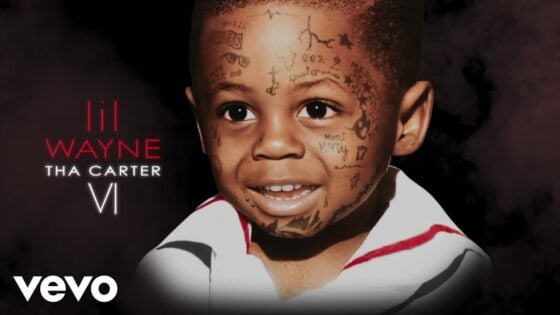

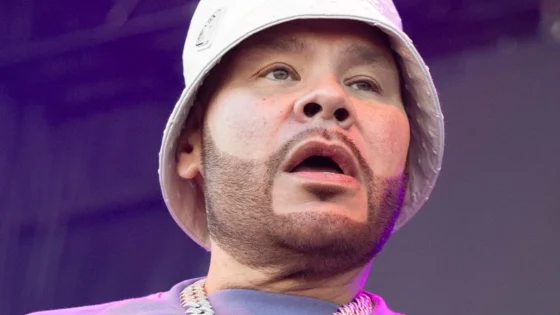



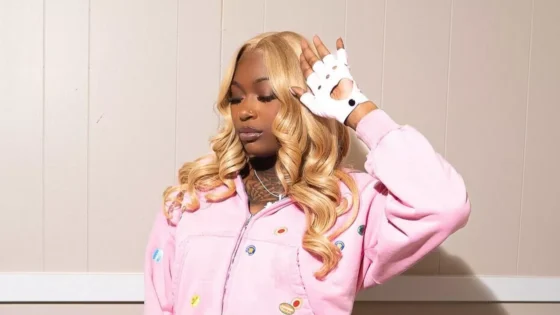





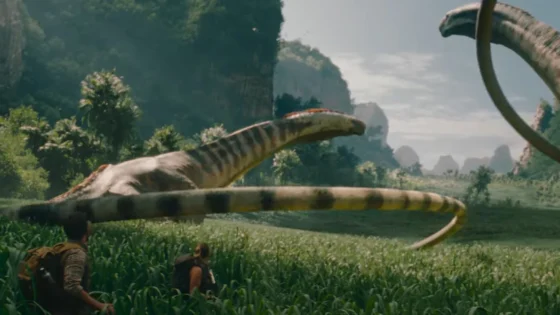







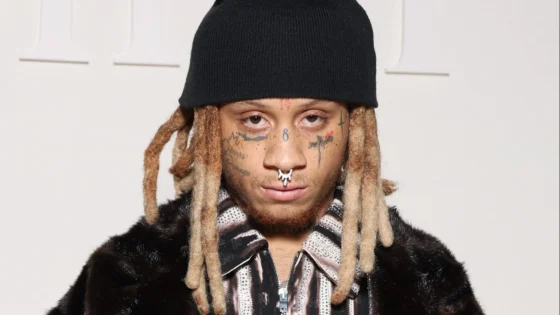



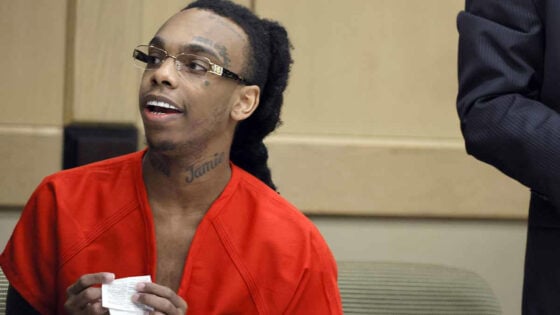

PHIL
January 12, 2022 at 1:46 pm
Love your list. I think it is spot on.
interesting that the 3 films many consider shifted cinemas “Tone” is your top three.
The other being Dr.Caligari(60)
Do you see another Horror film that shifted cinema?
Andrew Kidd
July 8, 2022 at 11:36 am
I’m also one of the few who prefer Whale’s first Frankenstein movie over Bride, although they’re both GREAT films. While it’s impossible for any one list to satisfy everyone, one movie I wish I had made it is Island of Lost Souls, which, ninety years later, not only has the power to scare audiences but really get under their skin.